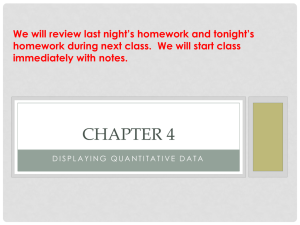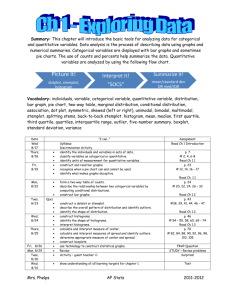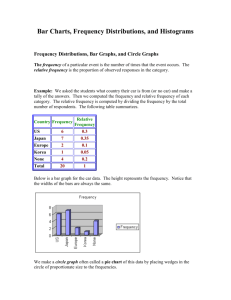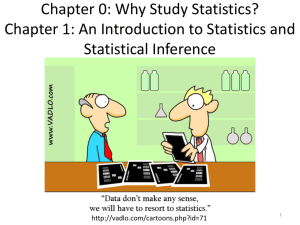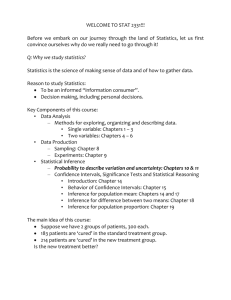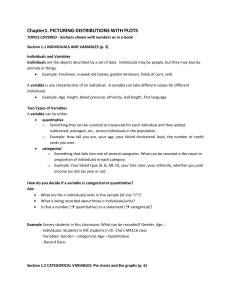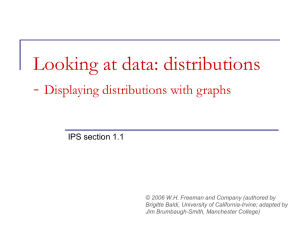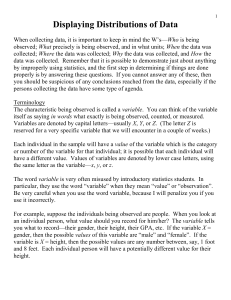Individuals: the objects described by a set of data I
advertisement
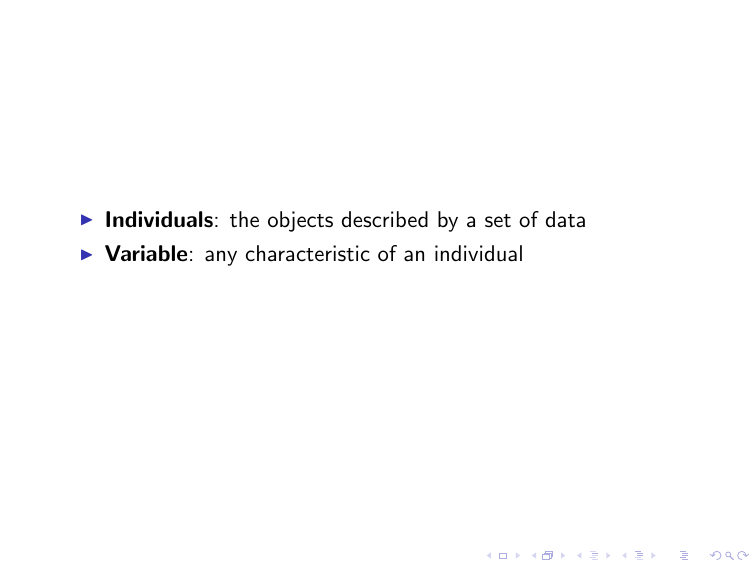
I Individuals: the objects described by a set of data I Variable: any characteristic of an individual I A categorical variable places an individual into one of several groups or categories. I A quantitative variable takes numerical values for which arithmetic operations such as adding and averaging make sense. I The distribution of a variable tells us what values it takes and how often it takes these values. I The values of a categorical variable are labels for the categories. The distribution of a categorical variable lists the categories and gives either the count or the percent of individuals who fall in each category. I Graphs for Categorical Variables: Pie Charts Bar Graphs I Graphs for Quantitative Variables: Histograms Stemplots (good for small data set) I Histgram: I Stemplot: stem 5 6 7 8 9 10 11 | | | | | | | | leaves (leaf unit: .1) 9 33588 00234677889 127 077 7 368 I Creating Histograms: 1. Choose the classes 2. Count the individuals 3. Draw the histogram I Understanding Histograms: 1. Center & Spread 2. Peaks 3. Symmetry: symmetric skewed to the right skewed to the left 4. Outliers: observations that fall clearly outside the overall patern I One peak I Two peaks I Symmetric I Skewed to the left I Skewed to the right I Create a Stemplot: 1. Separate each observation into a stem, consisting of all but the final (rightmost) digit, and a leaf, the final digit. 2. Write the stem in a vertical column with the smallest at the top, and draw a vertical line at the right of this column. 3. Write each leaf in the row to the right of its stem. 4. Split stems (double the number of stems) if need. I Time Plots: a time plot of a variable plots each observation against the time at which it was measured.
